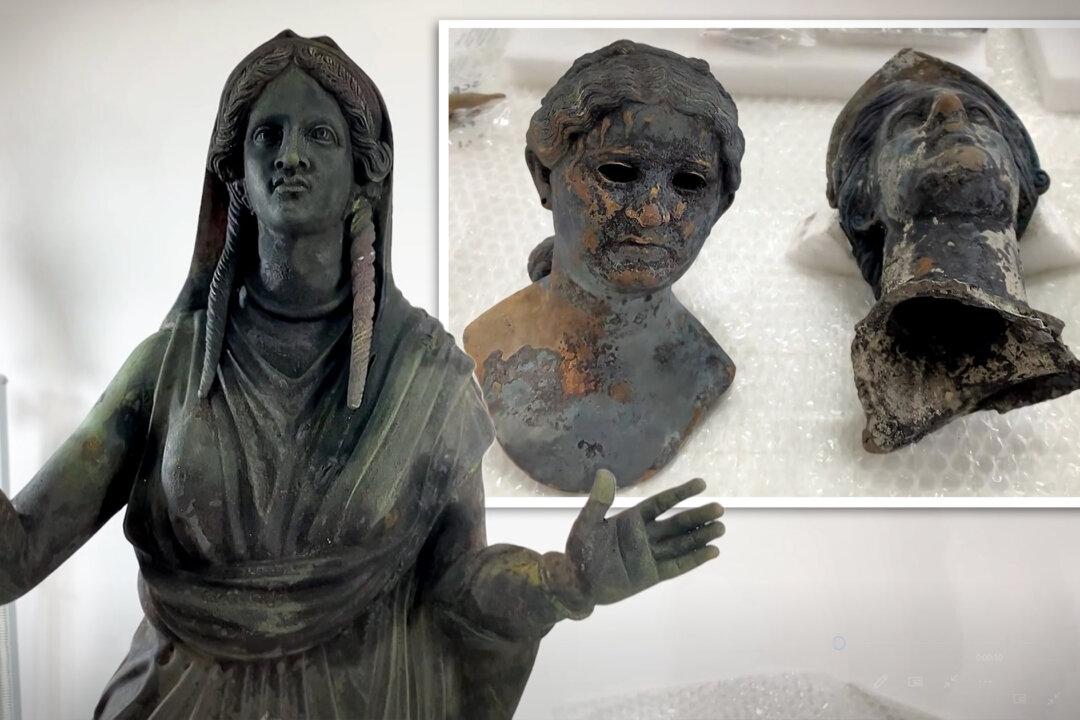Archaeologists in Italy have uncovered more than two dozen beautifully preserved bronze statues dating back to ancient Roman times in thermal baths in Tuscany, in what experts are hailing as a sensational find.
“From the bottom of the pool at the lowest point of its monumental construction, 24 masterpieces of bronze statues between the 2nd and 1st centuries B.C. have re-emerged,” Jacopo Tabolli, an assistant professor from the University for Foreigners in Siena, who coordinated the dig, told Reuters on Tuesday, Nov. 8.






